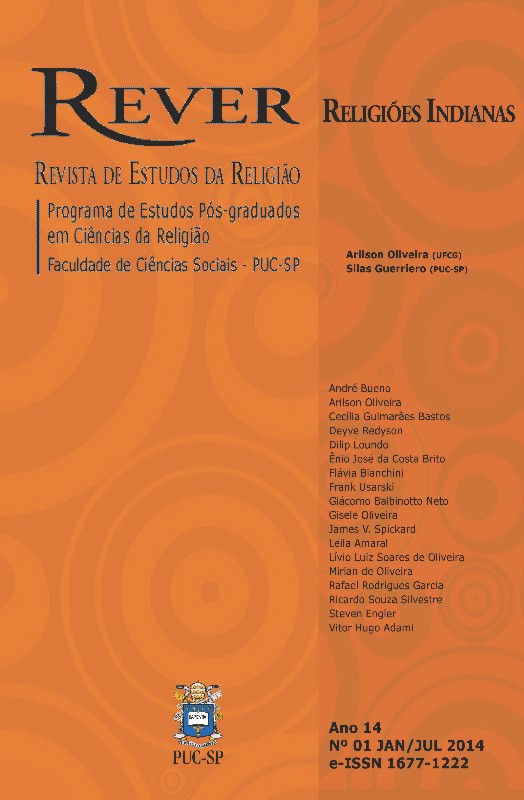Considerações sobre a “Doutrina das Duas Verdades” (Saṃvṛti-Satya E Paramārtha-Satya) em Nāgārjuna
Palavras-chave:
Nāgārjuna, “Budismo Mahāyana”, “duas verdades”, upāya, sūtrasResumo
Com base em uma leitura exegética e hermenêutica do Mūlamādhyamaka-Kārikā, de Nāgārjuna, o artigo sustenta que os todos os ensinamentos do Buda possuem como característica única o fato de combinar e articular, de forma sui generis, saṃvṛti-satya (verdade convencional) e paramārtha-satya (verdade suprema). Em outras palavras, os ensinamentos do Buda constituem – e, só por isso, se definem enquanto tal - uma reorientação, uma ressignificação, uma “subversão”, uma expansão do sentido originário de saṃvṛti-satya a partir das determinações do nível meta-conceptual de paramārtha-satya. Tal reorientação constitui uma instrumentalização atípica, extraordinária, não usual, de saṃvṛti-satya, marcada por um duplo movimento: (i) trata-se de instrumentalização habilmente manipulada (upāya) por um ser na plenitude de sua realização (buda/bodhisattva) e (ii) que é, ela mesma, uma adequação às especificidades e aos propósitos soteriológicos dos aspirantes ao nirvāṇa.Métricas
Carregando Métricas ...
Downloads
Publicado
2014-06-30
Como Citar
Loundo, D. (2014). Considerações sobre a “Doutrina das Duas Verdades” (Saṃvṛti-Satya E Paramārtha-Satya) em Nāgārjuna. REVER: Revista De Estudos Da Religião, 14(1), 94–109. Recuperado de https://revistas.pucsp.br/index.php/rever/article/view/20269
Edição
Seção
Seção Temática
Licença

Este trabalho está licenciado sob uma licença Creative Commons Attribution-NonCommercial 4.0 International License.
Autores que publicam nesta revista concordam com os seguintes termos:
- Autores mantém os direitos autorais e concedem à revista o direito de primeira publicação, com o trabalho simultaneamente licenciado sob a Licença Attribution-NonCommercial 4.0 International, que permite o compartilhamento do trabalho com reconhecimento da autoria e publicação inicial nesta revista.
- Autores têm autorização para assumir contratos adicionais separadamente, para distribuição não exclusiva da versão do trabalho publicada nesta revista (ex.: publicar em repositório institucional ou como capítulo de livro), com reconhecimento de autoria e publicação inicial nesta revista.


